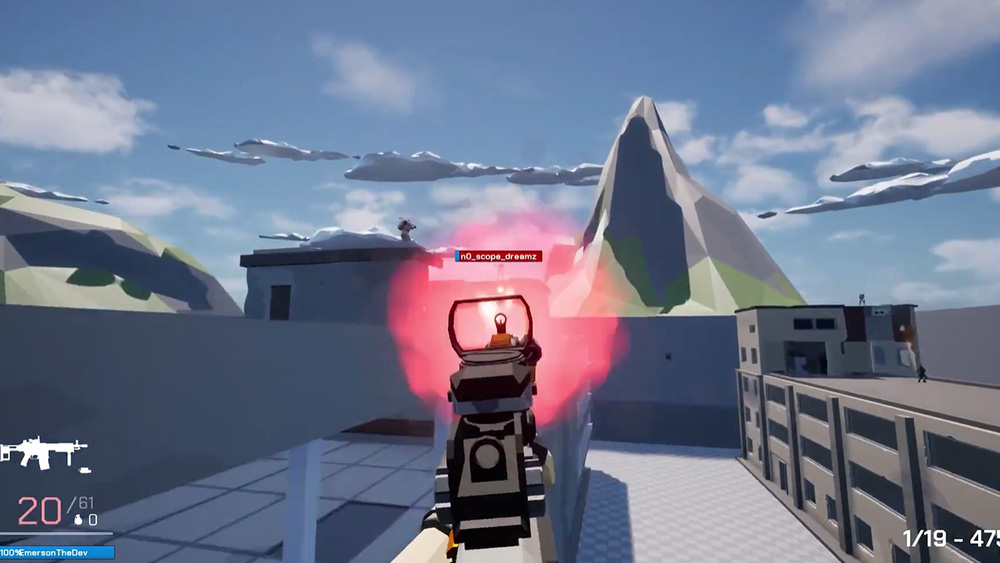How to draw a lion
This easy-to-follow video tutorial will teach you how to draw a lion that is anatomically correct.
Welcome to our guide on how to draw a lion. The King of the jungle, the lion is one, if not the largest, strongest and most powerful felines in the world. These majestic creatures have earned their status as rulers of the lands in which they inhabit.
In order to convincingly capture these amazing big cats when learning how to draw a lion, it's vital to pay close attention to cat's proportions, muscular definition and facial structure.
This step-by-step tutorial will guide you through how to draw a side view of a male African Lion, starting with the skeletal structure, then sketching in form, and finally adding details to create an accurate representation of a lion. The tutorial will also touch on the best way to depict a lion roaring. You can follow the video above and the steps below.
Note: it is highly recommended that you have a photo reference of a lion by your side when following this tutorial to observe subtle angles and details that can be easily missed.
Once you nailed learning how to draw a lion, be sure to check out our brilliant selection of other how to draw tutorials.
01. Draw in the head and torso
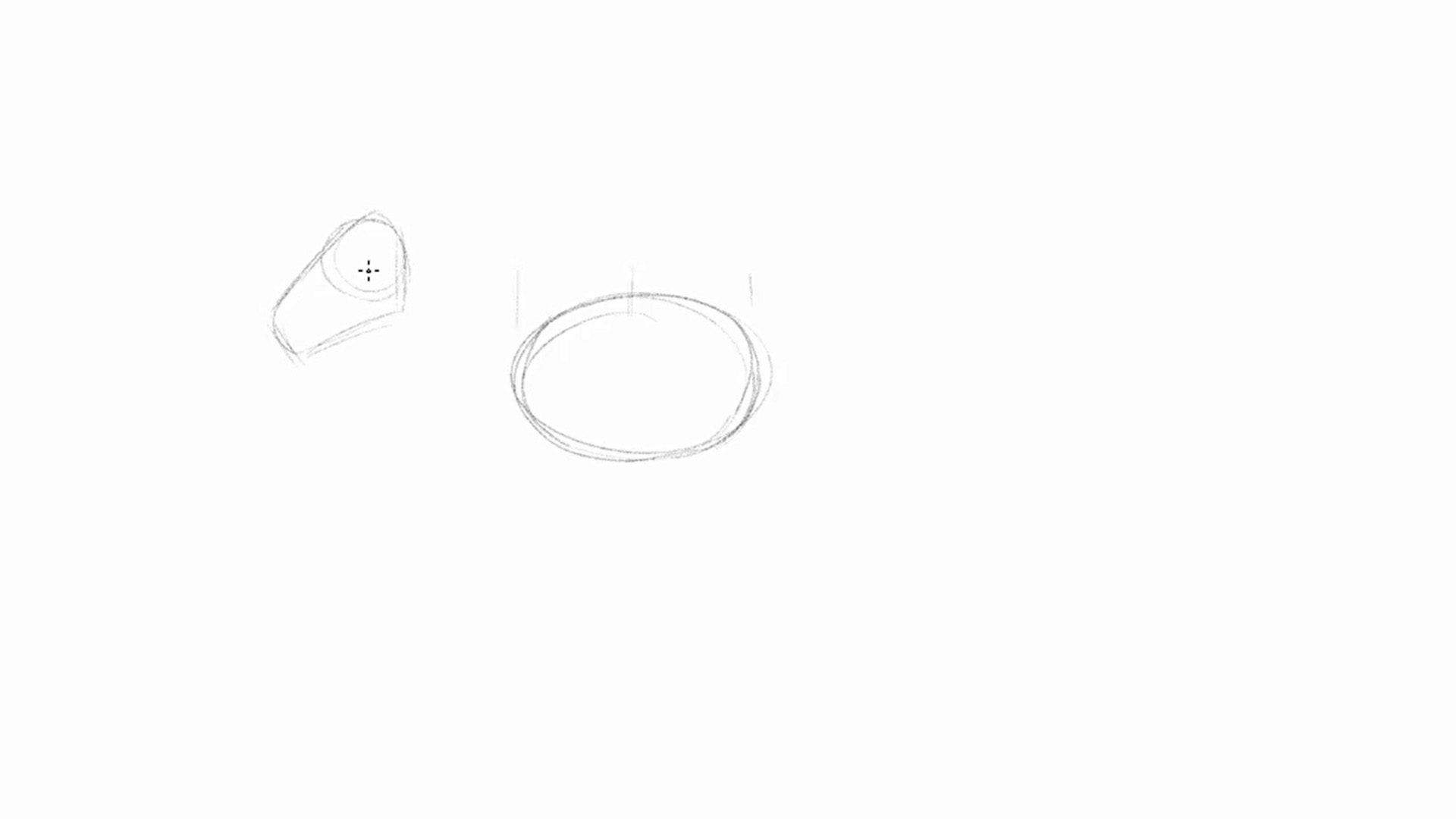
Draw a big oval for the rib cage, and etch in small marks to divide it in half. Use a circle as the head placed to the left, about half the size of the oval over but not higher than the top of the ribcage. Draw in a thimble-like shape angled down to capture the muzzle.
02. Connect the spine and torso
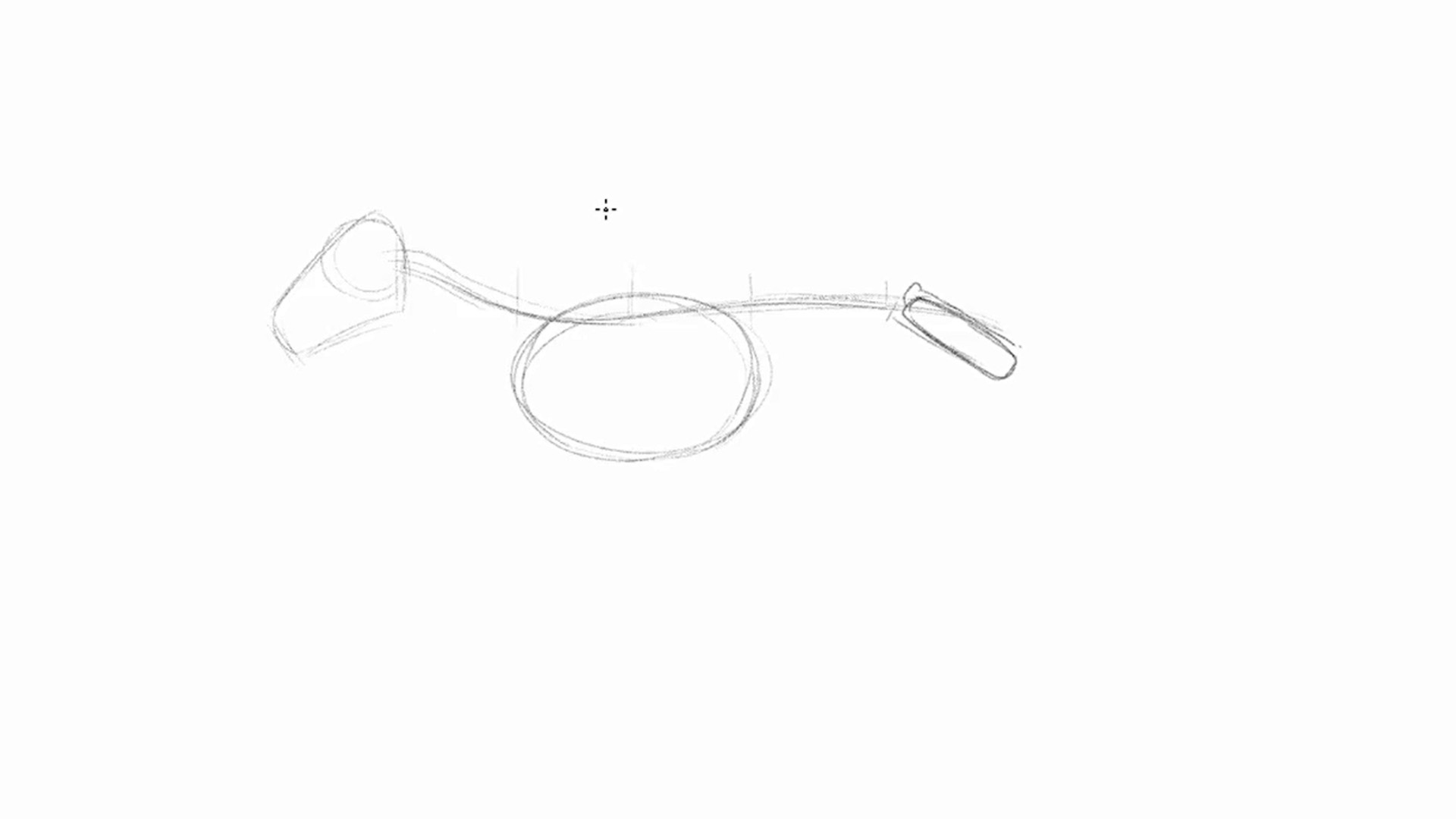
From the middle of the head, connect the neck to the body with an 'S' curve cutting through the ribcage to the back of the body. Make sure the arch in the back is not too rounded. Take the measurements of half of the oval and draw in the hips to the right of the ribcage as a skinny rectangle tilting forward.
Get the Creative Bloq Newsletter
Daily design news, reviews, how-tos and more, as picked by the editors.
03. Attach the front legs
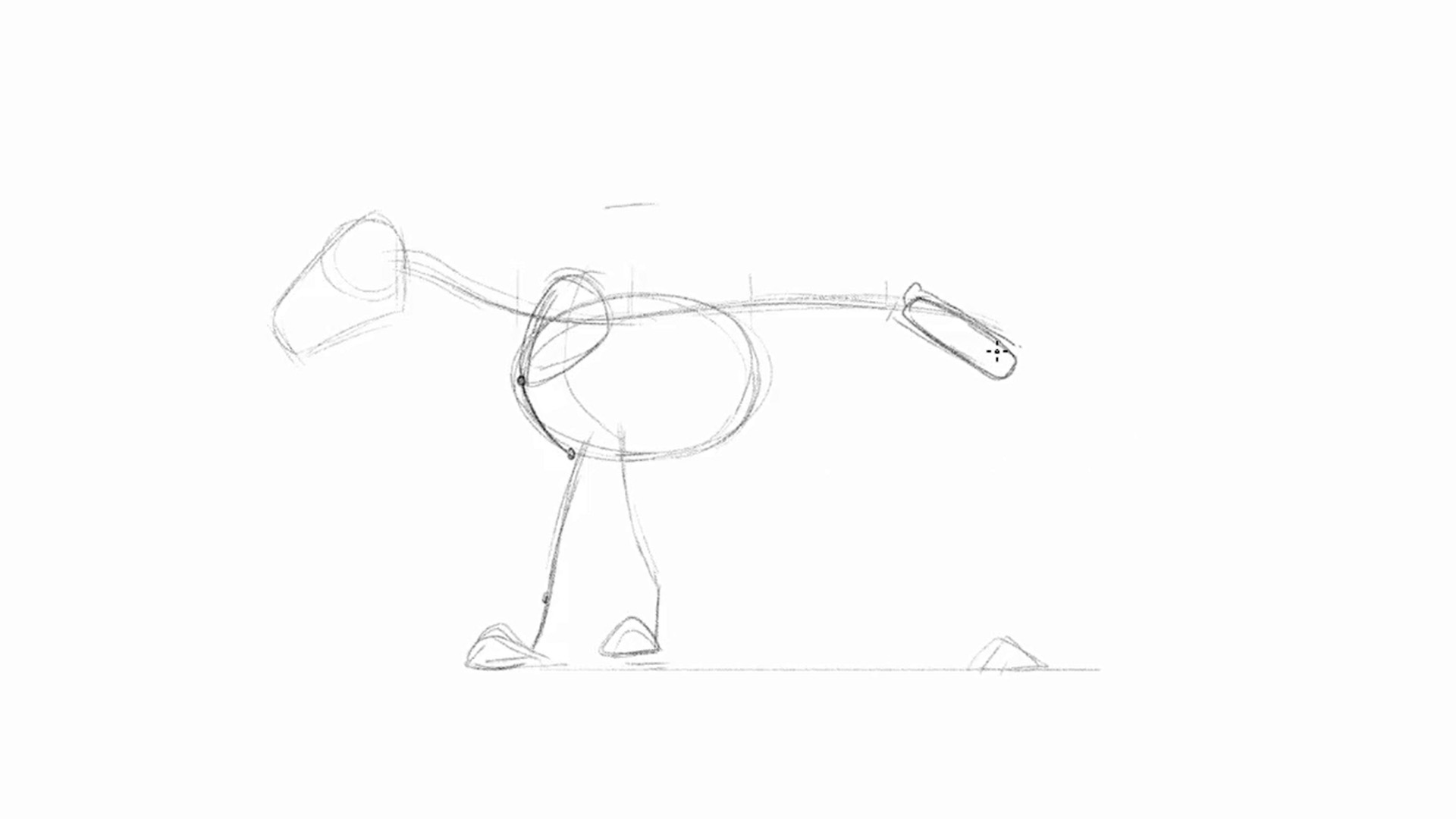
The lion is two times the height of the body and head combined. Draw small triangles as paws in front of the ribcage and behind the back of the hip bone. The scapulas are big seed like shapes that stick up higher than the spine in the standing pose. From the spine connect the arm back to the elbow, but no lower than the ribcage. Draw the rest of the leg dropping down to its paw, giving it a very subtle 'S' curve.
04. Attach the hind legs and tail
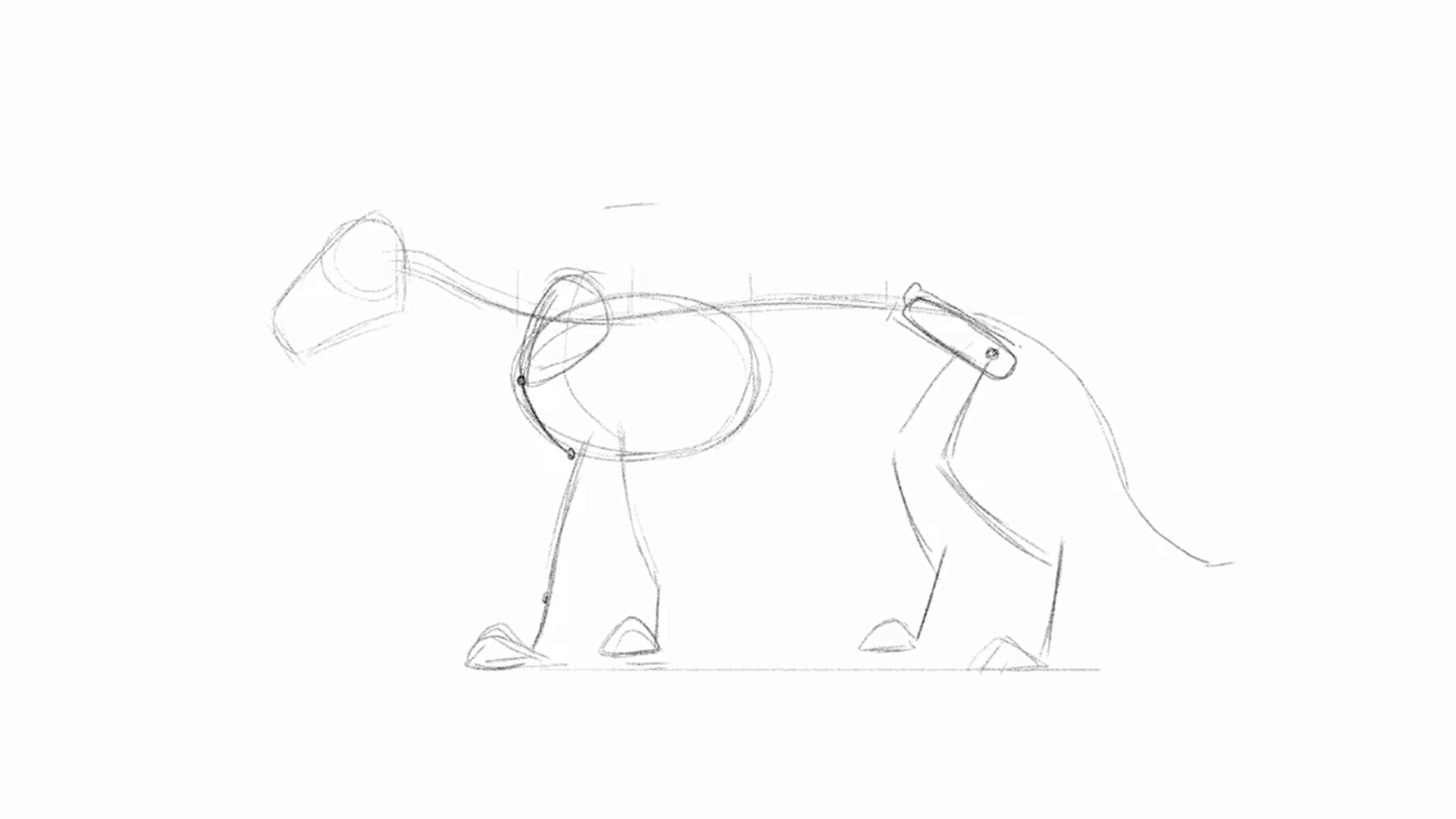
At the lower half of the hip, draw the leg coming forward down to the knees no further than the hips. The legs should come all the way back past the hips, followed by the foot straight down. The long curled tail droops down to the ankles.
05. Carve out a simplified version of the skull
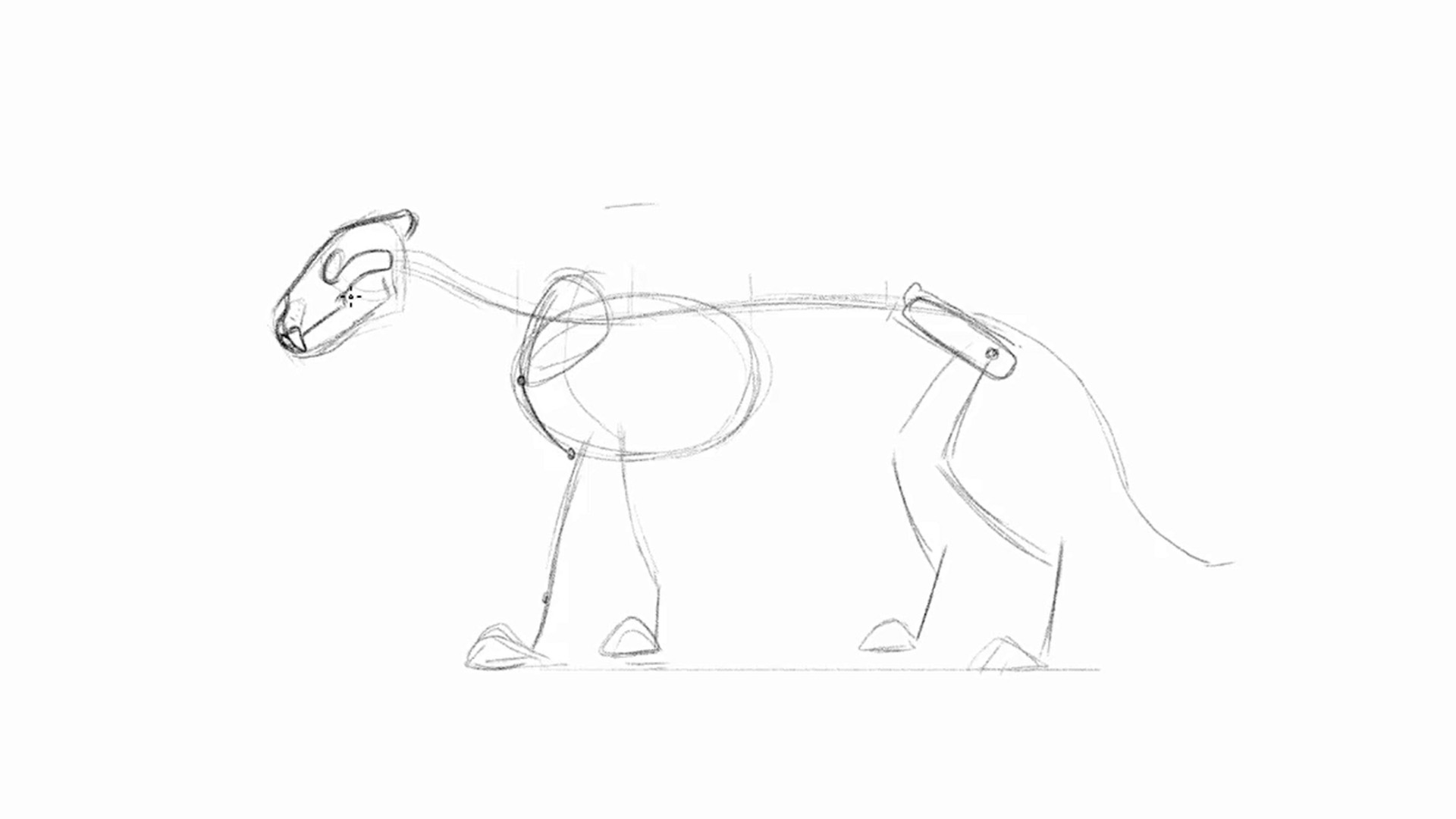
Flatten out the top of the head where the circle and line meets. Just below is where the eye socket sits. At the back of the skull, a small part should be sticking out, whereas the front has a groove carved out for the big nose. Follow the outline of the jaw as it cuts up into the cheek bone, which sits directly below the eye socket. Draw in the massive teeth in the front of the skull.
06. Mass out the head and neck
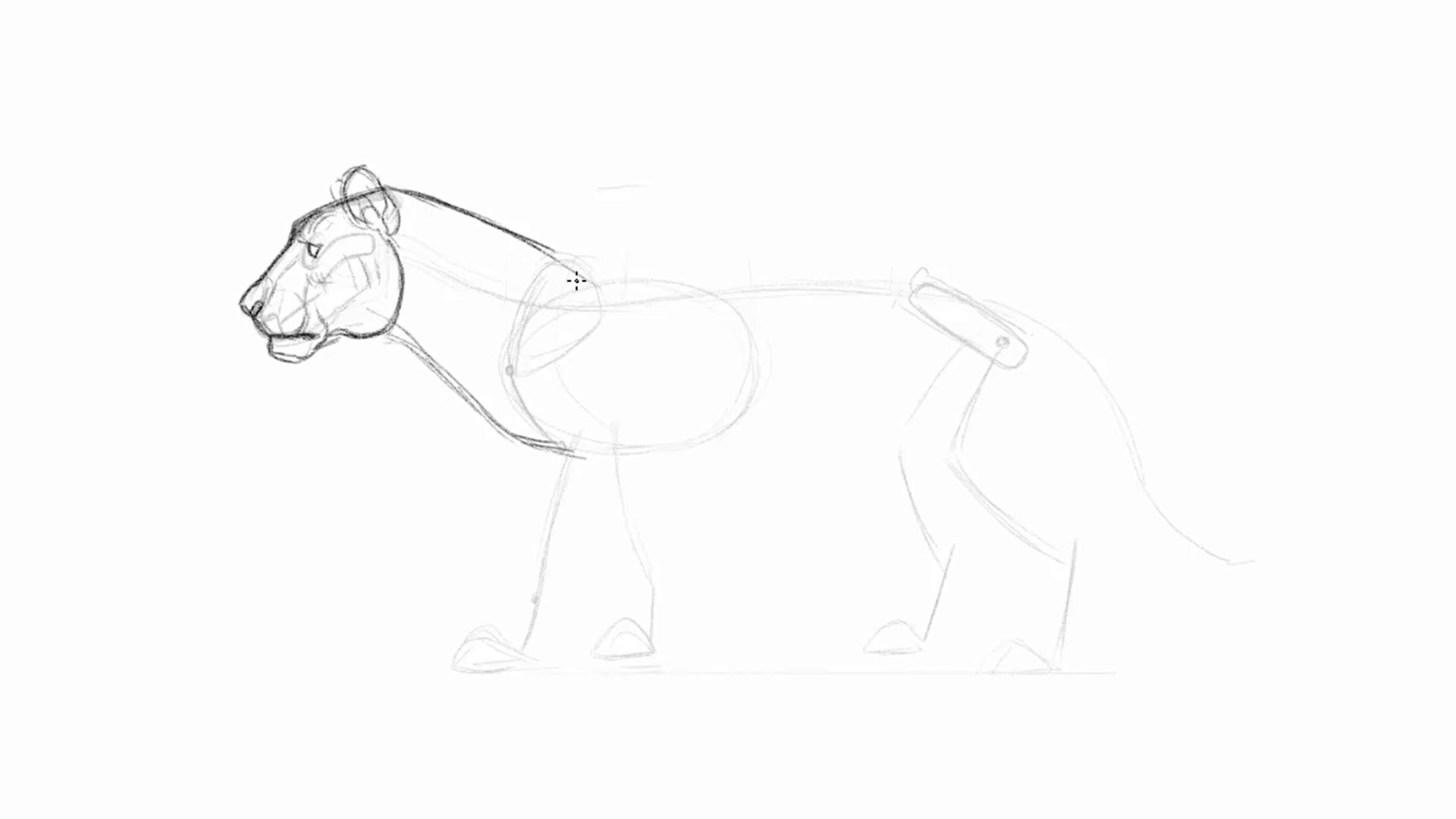
The lion's neck contains a lot of muscles, so draw a curved line to give it some volume. Place big eyebrows sitting right above the eye to give it that hooded look, and draw the eye as a simple pie shape. The nose should look round and full. Do the same with the mouth, try to draw the muzzle containing all of its massive teeth.
The front of the chin will stick out to look like it has an underbite. The corner of the mouth has lips that droop down to overlap the connection to the jaw. Lions have extremely strong biting strength that comes from their jaw muscles, so the back of the jaw is rounded. Complete the head by adding in some round ears.
07. Flesh out the front legs
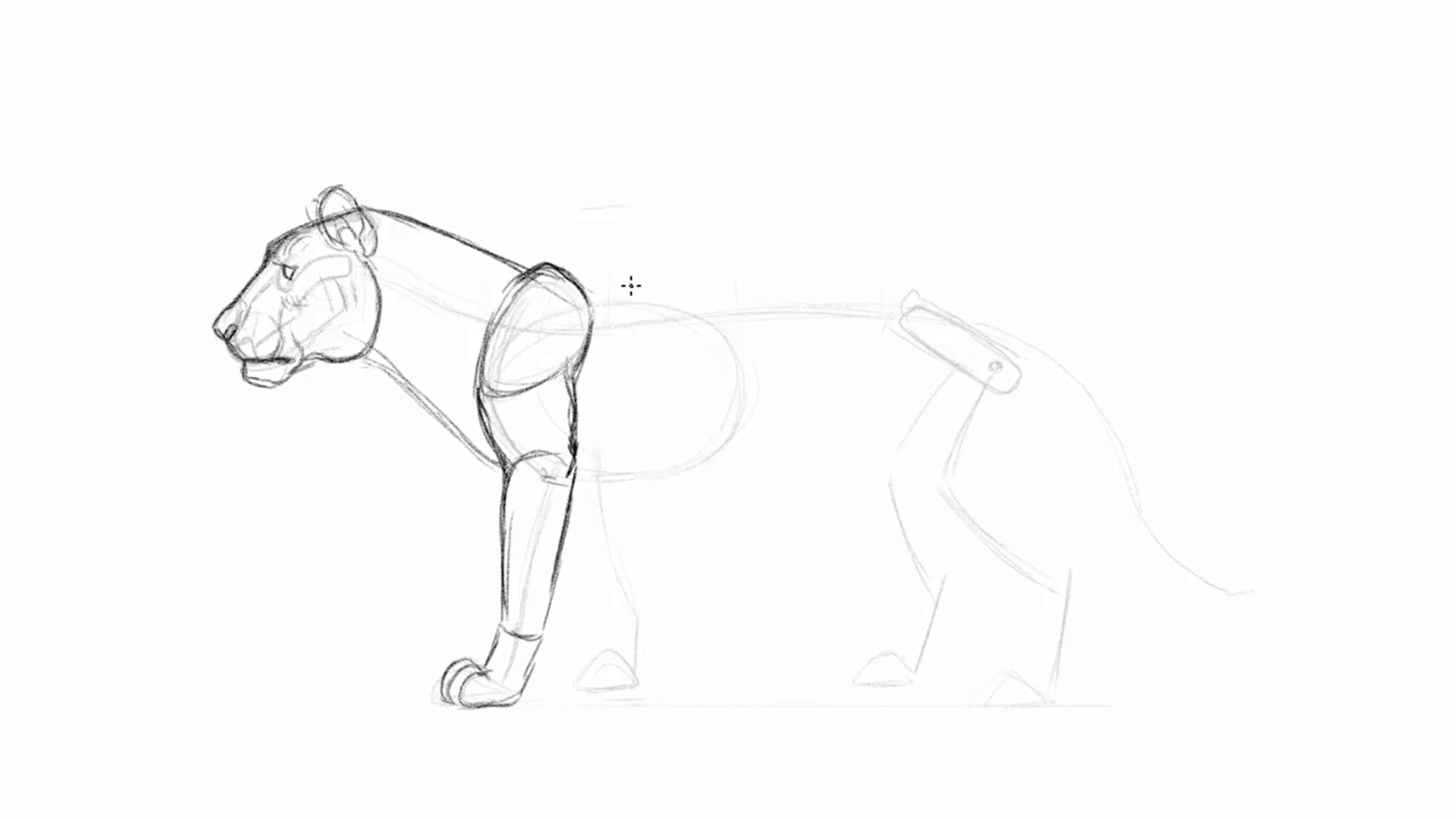
Draw an overlap of the boney shoulder from the body and neck. The form of the upper arm will swoop from the scapula down to the elbow. Make sure to have the arms look strong and broad. The rest of the leg will taper down to the wrist and paw, reaching down to some rounded finger tips. They shouldn't look pointy like a wolves paw since lions are able to retract their claws. Watch for overlaps in the arms to make them look more three-dimensional and muscular.
08. Form the hind legs and back
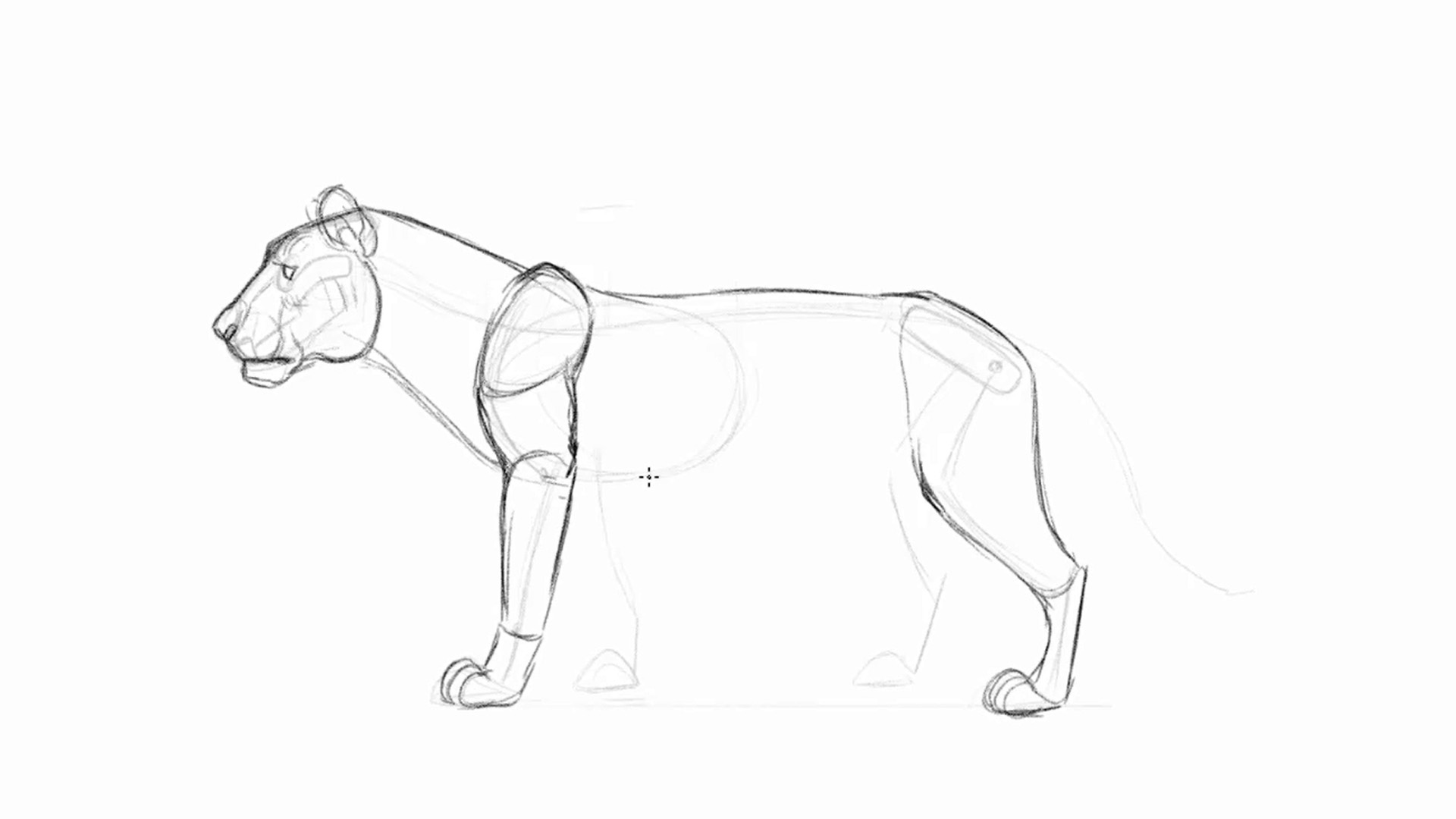
Follow the skeletal structure as you draw the back arch connecting to the hips, flowing straight into the back of the heel bone. The boney heel isn't covered in muscle so it will have a sharp corner. The top of the hip bone links right to the knee, and follows the rest of the skeletal structure all the way down to the toes.
09. Draw in the belly and remaining limbs
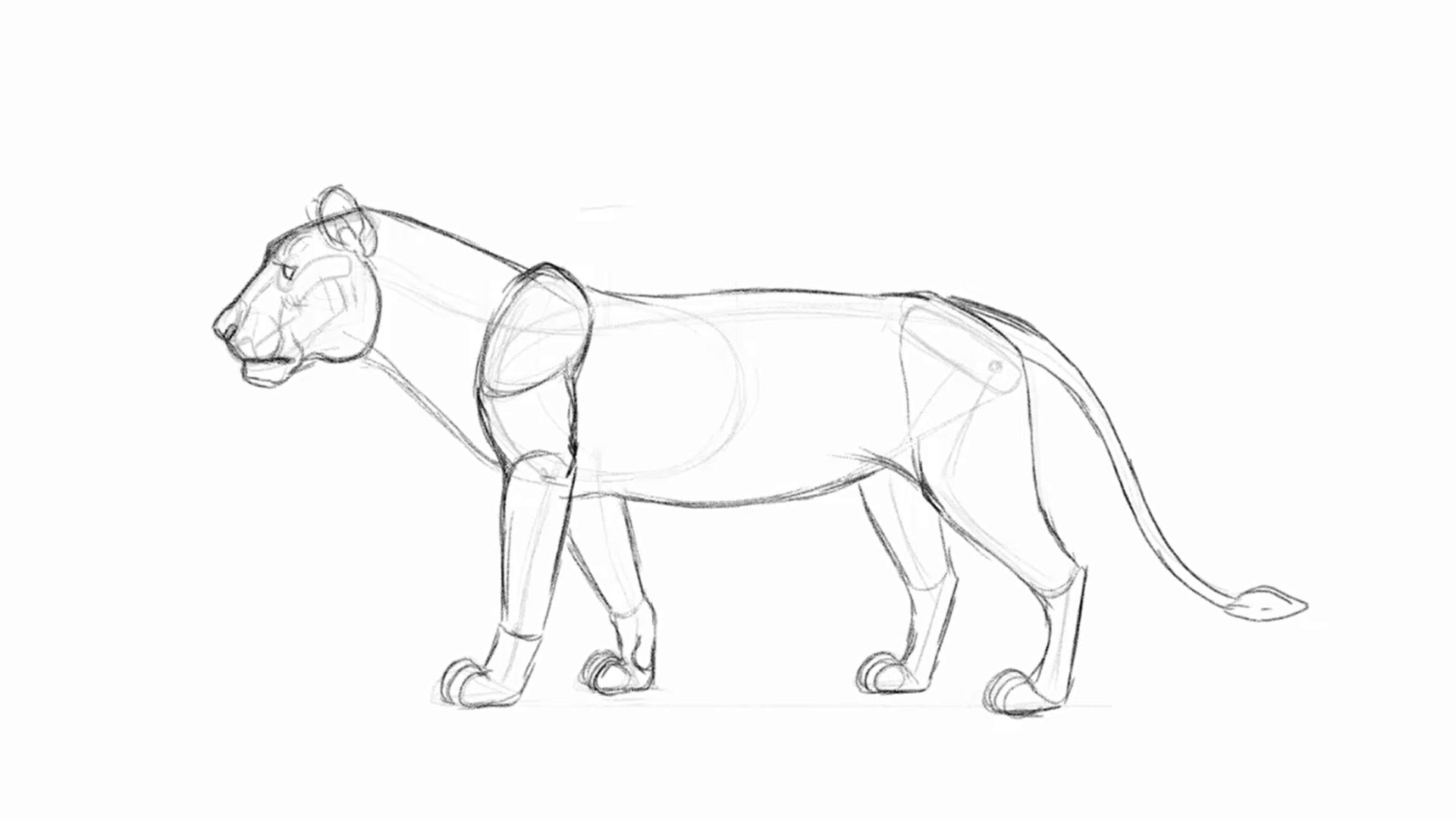
To finish off the torso, draw the belly sticking out a bit as it tucks up towards the back of the hip. And right where the torso and legs meets, it's connected by a layer of flexible skin . Don't forget to draw in the rest of the limbs in the back.
10. Design the mane
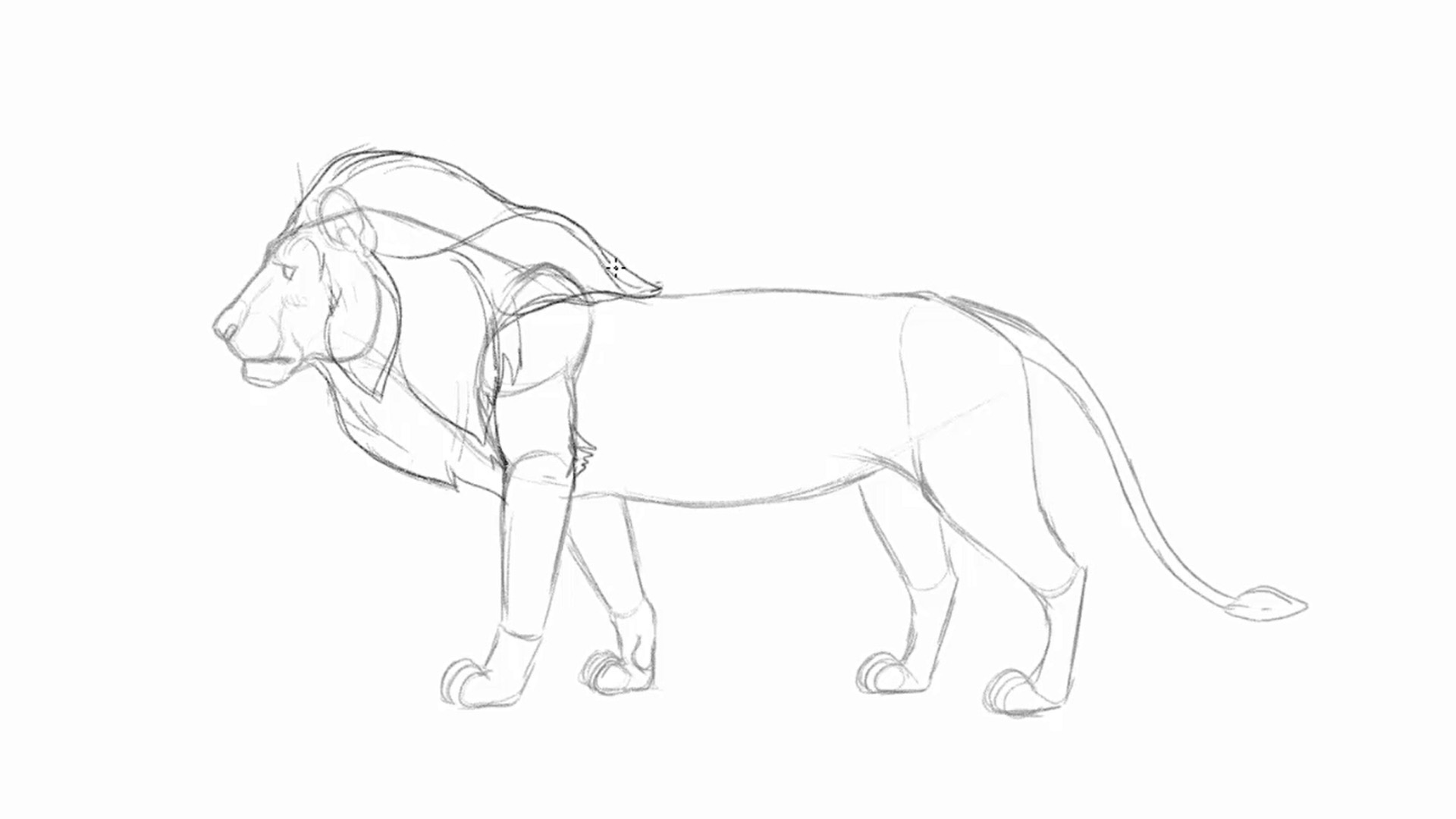
Outline the size and style you want the mane to have. Male lions have these large bushy manes that stretch from the head down to the neck, covering the beginning of the back. This thick furry area not only helps the lion protect its neck in a fight, but also identifies their strength by making them appear larger, which can intimidate competitors. Not every lion has the same mane, so drawing out different sizes and style is a great way to bring out personalities in a lion.
11. Detail out the face and mane
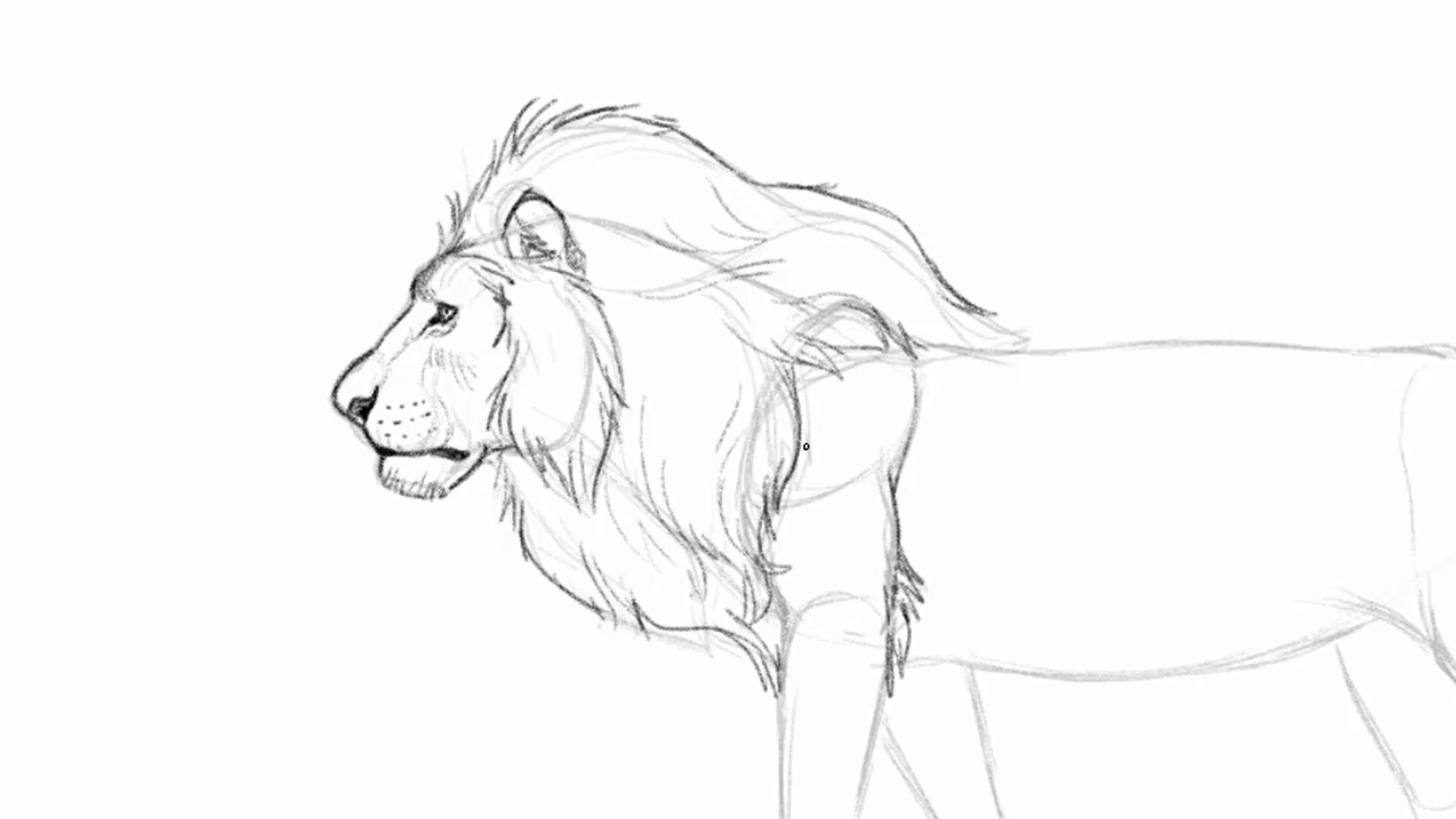
Now that the mass is formed, let's add some details to the lion. As you draw in the face, filling in areas with darker bolder lines will really make the facial features stick out. Areas like the eye have a dark rim all around, with the inner corner of the eye filled in with black to give it that strong gaze. The nose and lips also are filled in with darker lines to capture the lion's important features. Follow the guideline to draw in the details of the mane, and add some hair to the back of the elbow.
12. Refine the rest of the body
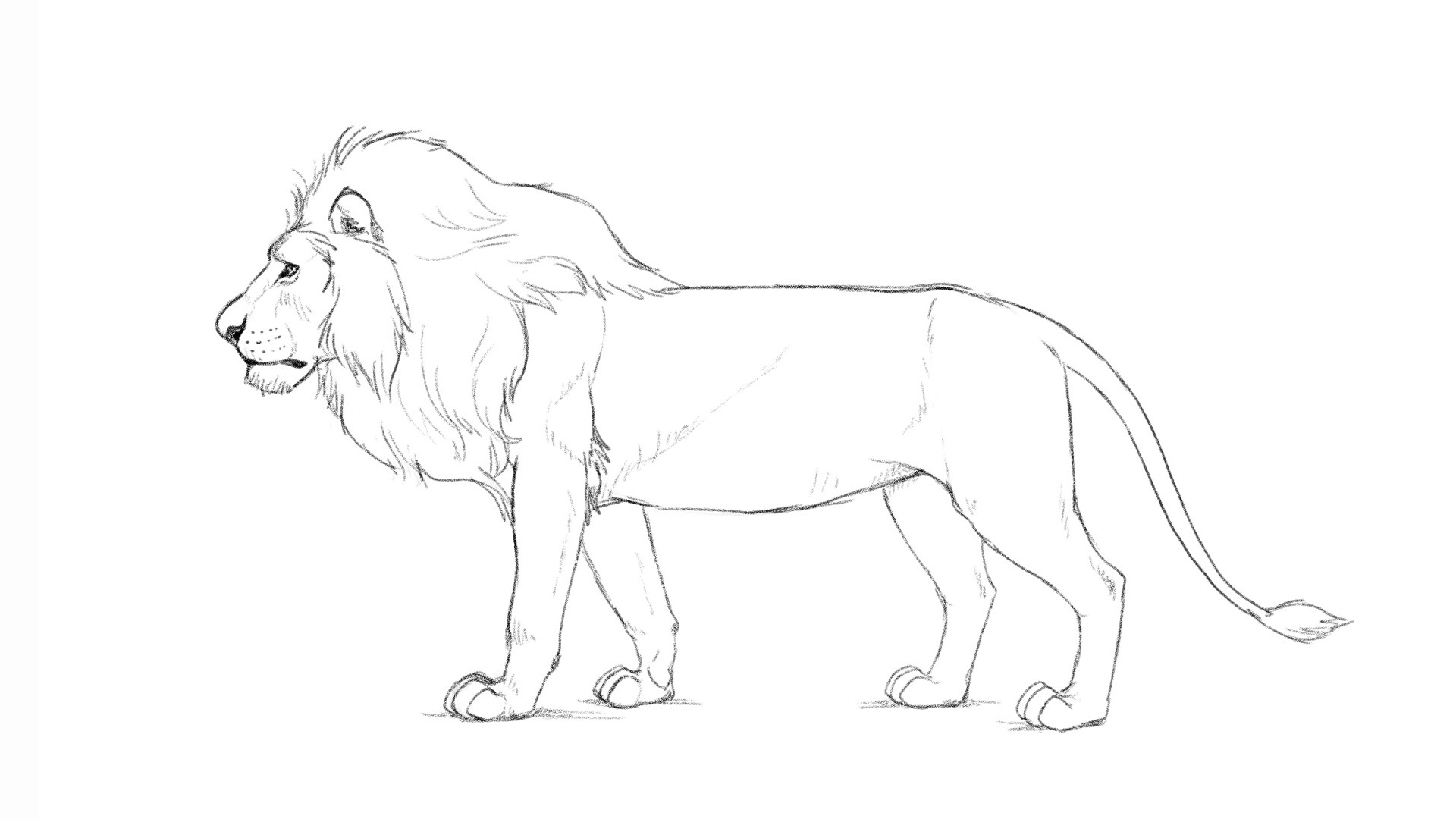
The majority of the lion's body is covered in very short fur so there's no need to make the lion look furry. Focus on drawing the muscle definition instead. When you want to add dimension and form to an area, draw a few hatched lines or draw in light lines along the form to imply there is a plane change. This method will help your drawing look more dimensional by applying it to areas like the round muscular arms, the different forms in the face, and the sharp boney areas like the heel and elbow.
13. Open the jaw to make the lion roar

Bringing back the skull we drew in the beginning of this tutorial, open the lion's jaw. Imagine the jaw hinges where the jaw and cheek meets, and swings back to open its mouth.
14. Squash and stretch the areas of the face
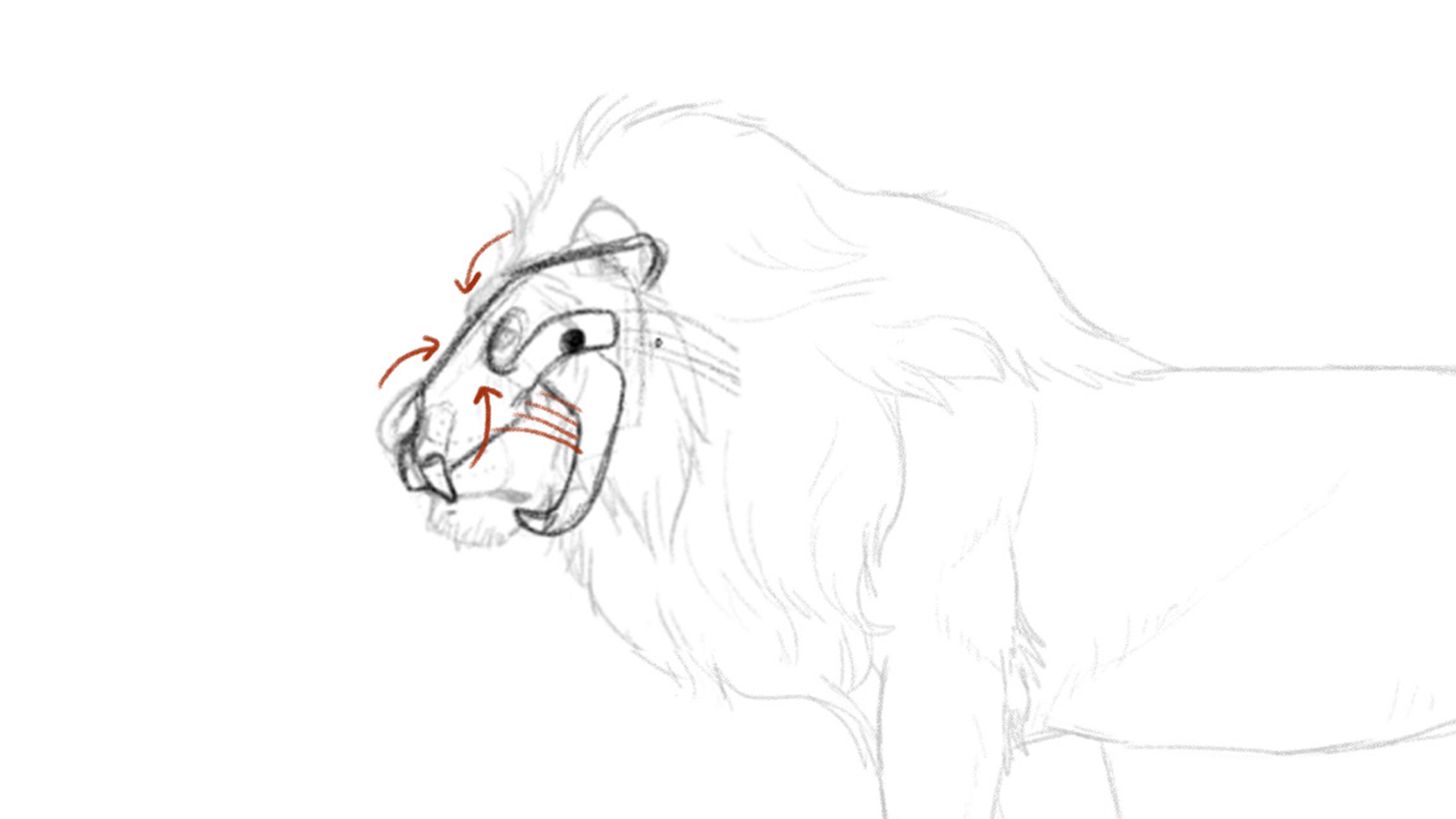
When the lion lets out a big roar and opens its mouth, the fleshy areas of the face will stretch and squash. The upper nose and brows scrunch up towards each other to form wrinkles between the eyes. As the mouth opens, the upper lips reveal its teeth, and the droopy lips and cheek stretch out.
15. Connect the head to the body
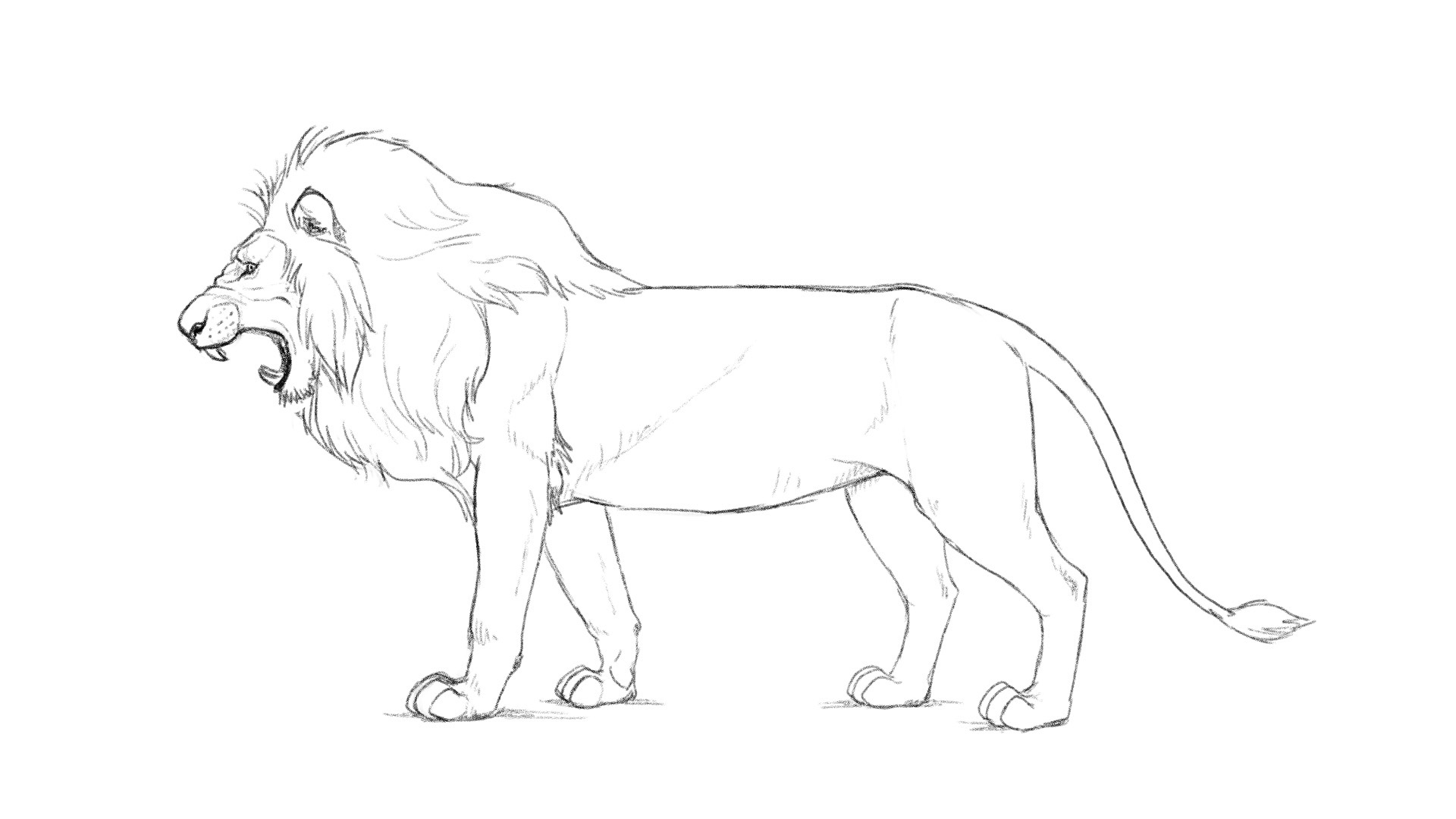
When you're done drawing in the face, draw in the rest of the mane to connect the face to the body.
Read more:

Thank you for reading 5 articles this month* Join now for unlimited access
Enjoy your first month for just £1 / $1 / €1
*Read 5 free articles per month without a subscription

Join now for unlimited access
Try first month for just £1 / $1 / €1

